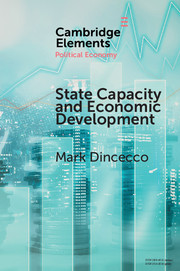Element contents
State Capacity and Economic Development
Published online by Cambridge University Press: 07 October 2017
Summary
Keywords
- Type
- Element
- Information
- Series: Elements in Political EconomyOnline ISBN: 9781108539913Publisher: Cambridge University PressPrint publication: 26 October 2017
References
Works Cited
- 64
- Cited by



